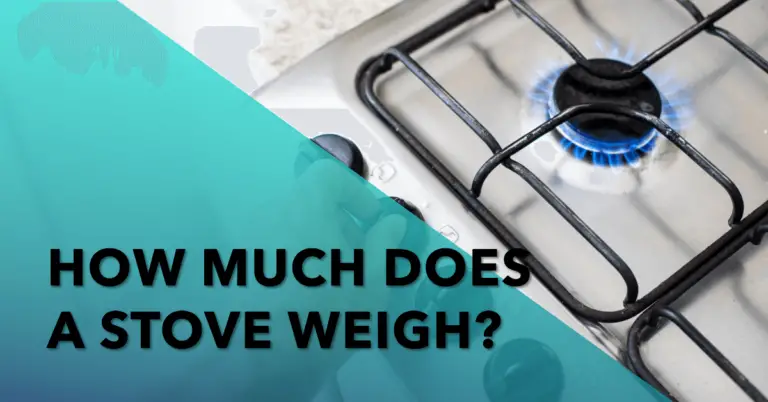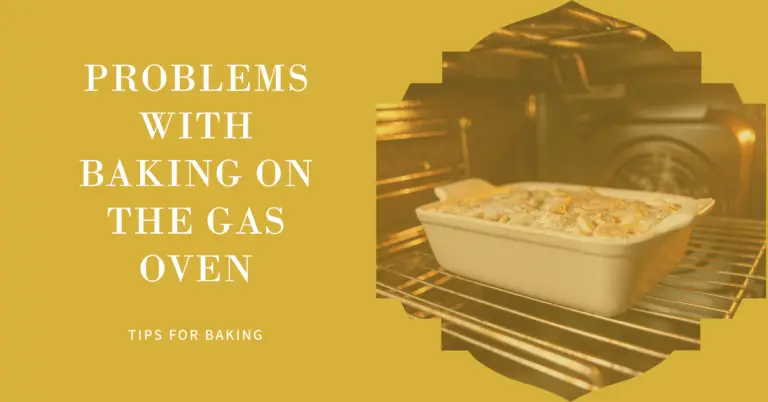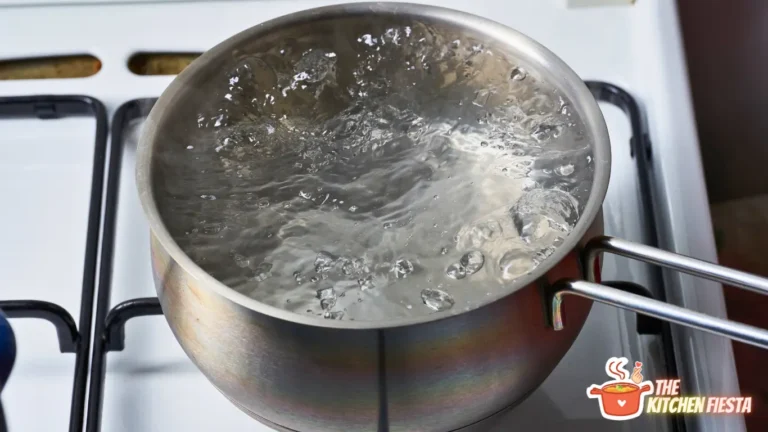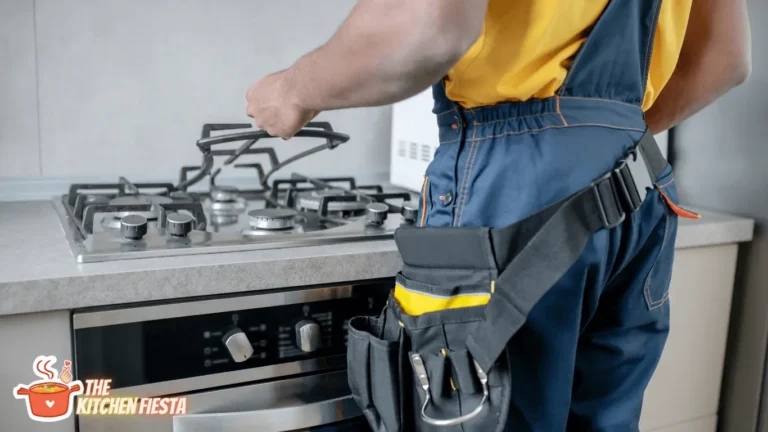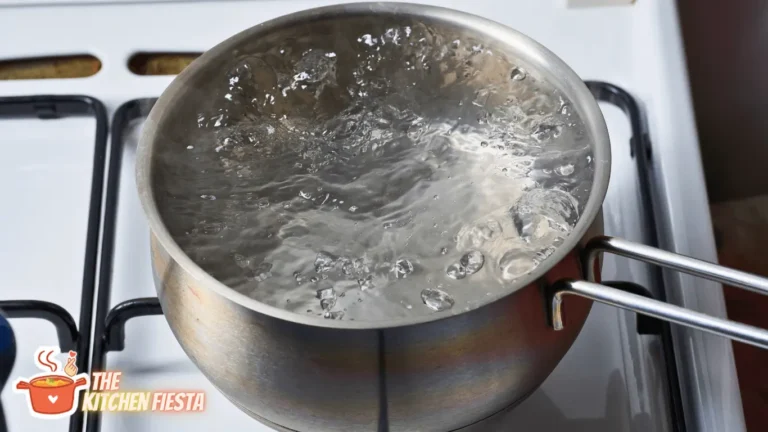Do Potatoes Cook Faster with the Skin On or Off?
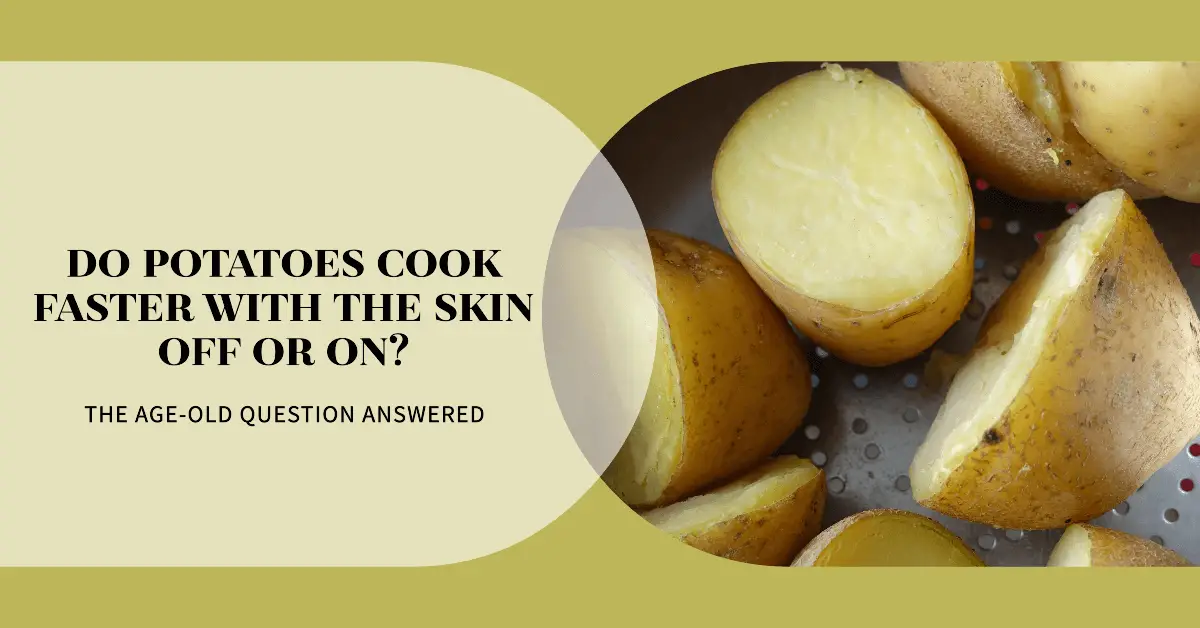
If you’ve ever wondered if leaving the potato skin on affects cook time, you’re not alone. Many home cooks debate whether to peel potatoes or leave them unpeeled for supposedly faster cooking.
After testing both boiling and baking potatoes with the skin on versus peeled, we discovered some definite differences in cook times. Below we share whether potatoes cook faster with the skin on or off, and why the skin makes a difference depending on the cooking method.
How the Potato Skin Impacts Boiling Time?
To test the impact of the potato skin on boil times, we boiled two batches of small new potatoes.
The first batch was boiled with the thin, delicate skins intact. The second batch was peeled before boiling. Here is what we discovered:
- Skin-on new potatoes: Took 15 minutes of boiling until fork tender in the middle.
- Peeled new potatoes: Took just 12 minutes to reach fork tender consistency.
Based on this simple test, keeping the skin on potatoes appears to increase boiling time slightly versus peeling them. So if your goal is the fastest possible boiled potato, peeling them first is the way to go.
But why does an extra thin potato skin barrier make such a difference in how quickly the potatoes soften during boiling?
The Potato Skin Creates an Insulating Layer
The main reason boiling potatoes whole with the skin on takes a little longer is that the potato skin provides a protective insulating layer against the boiling water.
With peeled potatoes, the boiling water can penetrate directly into the starchy interior flesh. This allows the hot water to quickly soak into the potatoes and begin softening them from the outside in.
But an intact potato skin creates a barrier that slows down the rate at which boiling water can soak into the inner flesh. Rather than direct contact, the boiling water must conduct heat through the skin first before beginning to soften the interior of the potato.
This skin insulation effect increases boil times by just a few minutes. But it demonstrates that the skin does slow down heat and moisture transfer into the potato during boiling.
Peeling Potatoes Allows Faster Water Access
Taking a vegetable peeler to potatoes before boiling removes this insulating skin layer entirely.
With peeled potatoes, hot boiling water can immediately access the starchy interior flesh. Rather than having to go through the skin first, the boiling water touches the potato flesh directly.
This allows heat and moisture to quickly transfer into the potatoes. With direct access to the potato insides, the boiling water easily soaks into the peeled potatoes and starts breaking down pectin and starch rapidly.
The result is potatoes that cook through and become tender in a shorter boil time with the skins removed.
How the Skin Affects Baking Times?
Beyond boiling, we also tested the impact of the potato skin on baking times. We baked two batches of medium russet potatoes, similar in size and weight.
- Potatoes baked with skins on: Took 50 minutes at 425°F until fork tender in the middle.
- Peeled potatoes baked: Took 40 minutes at 425°F to become fork tender.
Based on the 10 minute difference, the potato skin appears to slow baking time considerably. This matches the effect we saw with boiling.
So whether you are boiling, baking, or roasting potatoes, leaving the skin on will increase overall cook time versus peeling them first. But how exactly does the potato skin make potatoes take longer to bake?
The Skin Acts as an Insulator While Baking
Similar to during boiling, the potato’s outer skin provides insulation that reduces heat transfer during baking. This insulation effect is even more pronounced when baking.
When potatoes bake with their skins on, the dry, thick skin forms a protective barrier around the inner flesh. This limits how much heat and moisture can penetrate into the middle while baking.
With peeled potatoes, the heat from the oven can hit the potato flesh directly. This allows much faster heat transfer into the potatoes.
Just like when boiling, the skin keeps some heat and moisture sealed inside the potatoes while baking. Less moisture evaporates from the potatoes during baking when the skin is intact.
Removing the skin eliminates this insulation, causing potatoes to bake faster. More moisture escapes, intensifying the drying effect that produces the classic baked potato fluffy interior.
Direct Heat Contact Speeds Cooking
Because of the skin’s protective nature, baking potatoes without their skins allows much more direct heat contact with the potato flesh.
Rather than having to conduct through the skin, the oven’s heat can hit the exposed potato directly. This direct heat contact transfers energy faster, speeding up the cooking process.
The skin also traps some internal moisture and heat during baking. With the skin removed, more moisture evaporates off the surface of the potatoes in the dry oven heat.
This loss of moisture concentrates the starch content of the potatoes, while the high heat degrades pectin in the cell walls. The combination helps peeled potatoes reach tender faster than when protected by their skin jackets.
Should You Cook Potatoes with the Skin On or Off?
Now that we know potatoes cook faster without their skins due to the insulation effect, should we always peel them before cooking?
Not necessarily! Whether to peel potatoes or not depends on a few factors:
Cook Potatoes with Skin On When:
- Using small new potatoes – their thin skin adds minimal cook time.
- Making roasted potatoes or home fries – the skins add texture.
- Baking whole potatoes – the skin seals in moisture and flavor.
- You want more fiber and nutrients – skins contain additional fiber and vitamins.
Remove Potato Skins When:
- Making mashed potatoes – peeling gives a smoother consistency.
- You want the fastest cook time – skins noticeably delay boiling and baking.
- Appearance matters – some dishes look better with peeled potatoes.
- Following a recipe – some recipes specify peeled or unpeeled potatoes.
Potato skins do add more fiber, iron, potassium, vitamin C, vitamin B6, and other nutrients to dishes. So leaving them on can provide nutritional benefits.
However, skins can impact the texture and look of mashed potatoes and potato salads. They also take longer to become tender during cooking.
For occasions when time is short, peeling potatoes can help them cook faster and more evenly. But for most other cooking methods, leaving the nutritious skins on wins out over peeling.
FAQs About Potato Skin and Cook Times
Still have questions about how potato skins impact overall cook time? Here are answers to some frequently asked questions:
Does leaving the skin on microwaved potatoes affect cook time?
Surprisingly, the skin has minimal impact on microwave cook times for potatoes. The intense heat of microwaves penetrates potatoes easily whether the skin is on or off.
What does make a difference is pricking holes in the potato before microwaving to allow venting steam. This prevents uneaven cooking and potato explosions.
Do thicker potato skins take longer to cook than thinner skins?
Yes, thicker potato skins like on russets will increase cook times more than thinner new potato skins. The thicker the skin, the more insulation it provides to reduce heat and moisture transfer.
Should sweet potatoes be peeled before cooking?
Unlike white potato skins, sweet potato skins turn unpleasantly tough when cooked. Leaving the skin on baking sweet potatoes risks hard, chewy skins surrounding the interior.
The best practice for sweets is peeling them before cooking. But leave a little color on for visual appeal.
Does leaving skins on baked potatoes seal in more nutrients?
Since baking with the skin on reduces moisture loss, it does help retain water-soluble vitamins like vitamin C and B-complex vitamins compared to peeling before baking.
Should you peel potatoes before making hash browns?
For the crispiest hash browns, yes, peeling potatoes first is best. Those with skins on risk soggy interiors. Without the skin, the shreds crisp up exceedingly well when pan-fried.
The Takeaway on Potato Skins and Cook Times
Hopefully this gives you a better understanding of how and why those potato jackets impact overall cook time. While skins do add valuable nutrients and texture, removing them prior to cooking is one trick for cutting down total cook time.
When time is of the essence, peeling potatoes can shave off a few minutes from boil, bake, and roast times. But when you have the extra minutes to spare, leave those skins on for added nutritional value.
Whichever way you cook them, potatoes remain an amazing source of vitamins, minerals, antioxidants, and starch. So don’t let the skins deter you from enjoying more of these tasty, versatile tubers!
Let us know if you have any other food science cooking questions. We’re happy to test out more potato and veggie cooking experiments in the kitchen.

